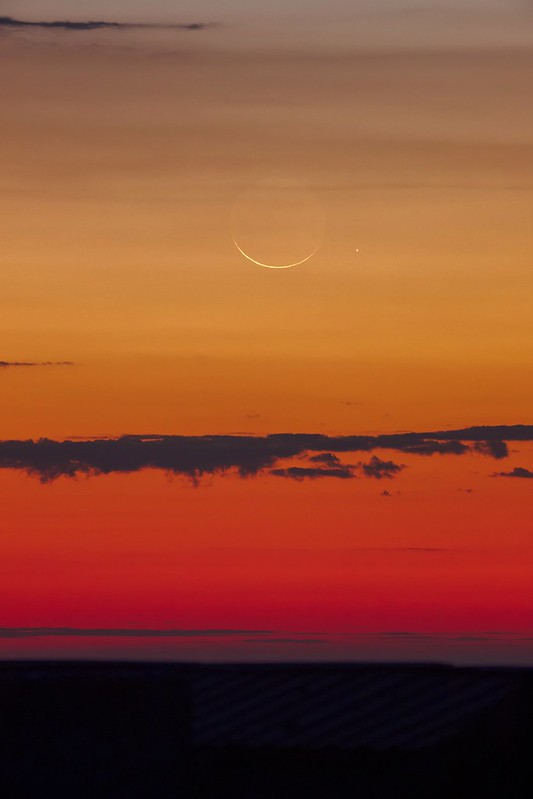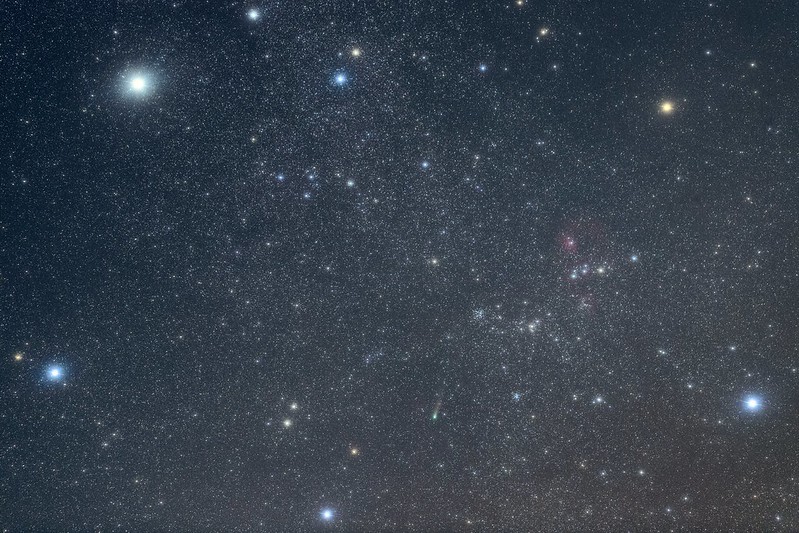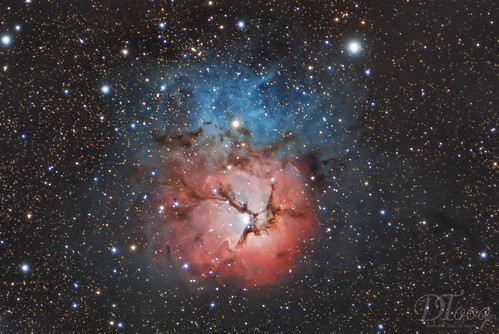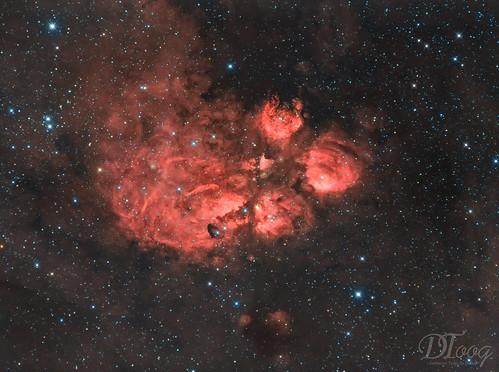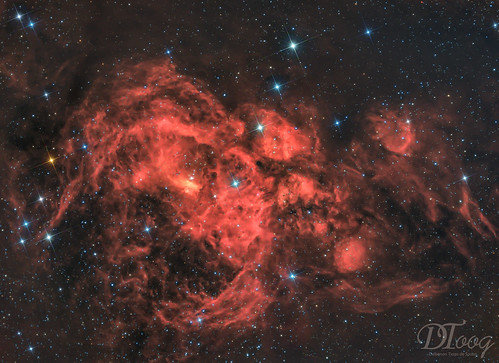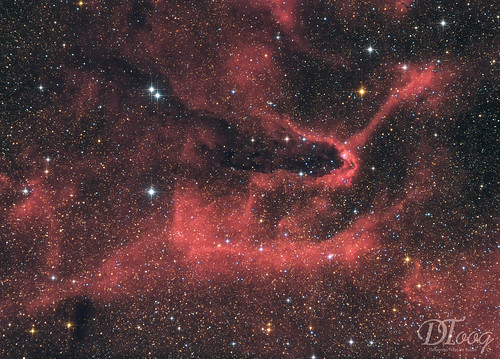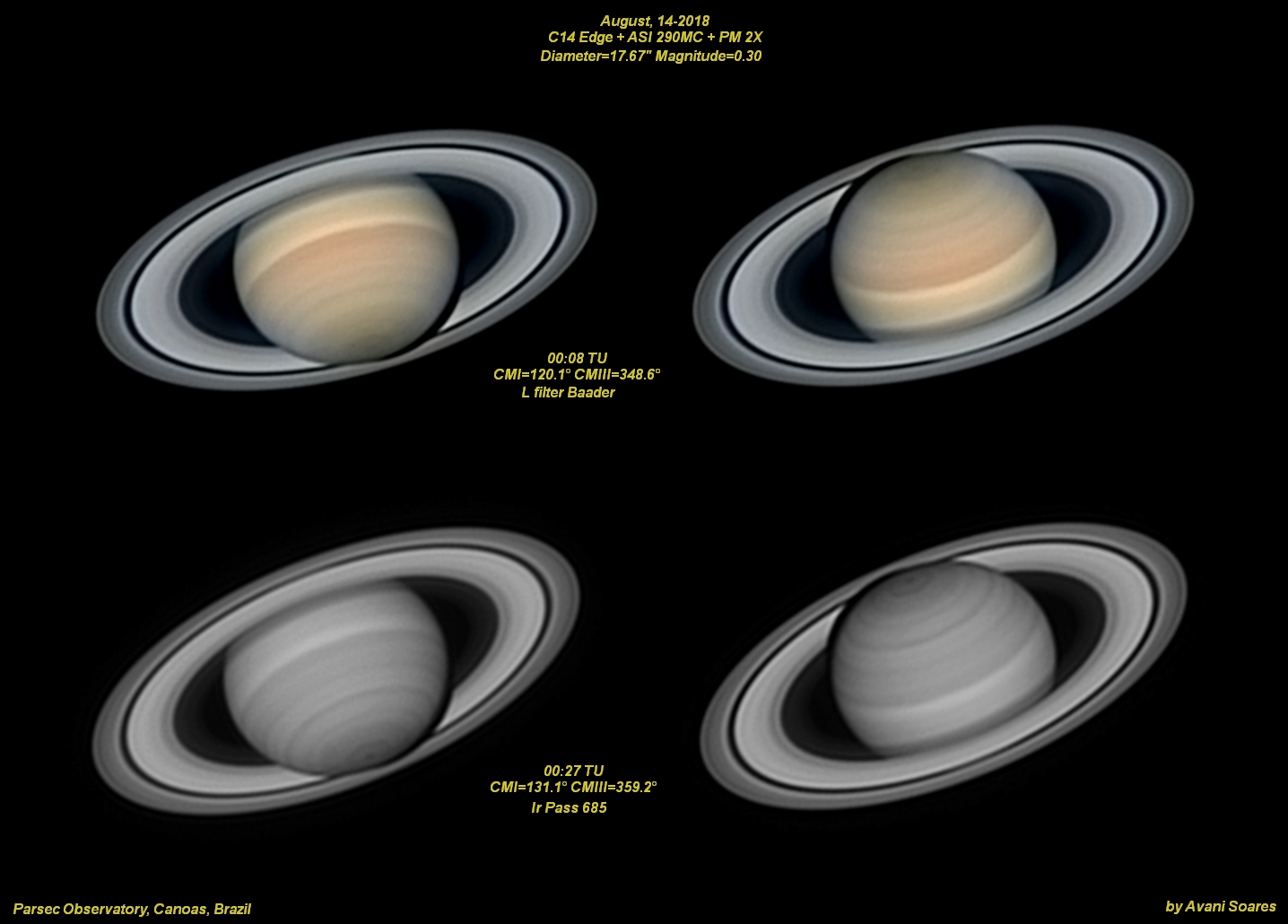Submission: 2018 September
Re: Submission: 2018 September
Messier 104
Please see full resolution here:
http://www.pbase.com/tango33/image/168083797/original
Thanks,
Kfir Simon
Please see full resolution here:
http://www.pbase.com/tango33/image/168083797/original
Thanks,
Kfir Simon
Re: Submission: 2018 September
Hi
Pelican nebula
https://cdn.astrobin.com/images/thumbs/ ... ermark.jpg
Imaging telescope or lens:William Optics GT-81
Mount:Celestron Advanced VX Celestron Avx
Guiding telescope or lens:William Optics GT-81
Focal reducer:William Optics Flattener/reducer 0.8x
Frames:
Ha: 6x600" bin 1x1
OIII: 6x600" bin 1x1
SII: 6x600" bin 1x1
David
https://myastrophotography.wixsite.com/home
Pelican nebula
https://cdn.astrobin.com/images/thumbs/ ... ermark.jpg
Imaging telescope or lens:William Optics GT-81
Mount:Celestron Advanced VX Celestron Avx
Guiding telescope or lens:William Optics GT-81
Focal reducer:William Optics Flattener/reducer 0.8x
Frames:
Ha: 6x600" bin 1x1
OIII: 6x600" bin 1x1
SII: 6x600" bin 1x1
David
https://myastrophotography.wixsite.com/home
Last edited by bystander on Mon Sep 10, 2018 10:06 pm, edited 1 time in total.
Reason: Please, no hotlinks to images > 500Kb. Uploaded as an attachment.
Reason: Please, no hotlinks to images > 500Kb. Uploaded as an attachment.
-
vanamonde81
- Science Officer
- Posts: 143
- Joined: Fri Apr 12, 2013 7:46 am
Re: Submission: 2018 September
Startrails at the Danube
Copyright: György Soponyai
This coal loader station is located at the shore of river Danube near Esztergom, Hungary. The station was built in 1927 as destination of a six-kilometer-long cableway connecting the nearby coal mines with transporter ships. The daily capacity of this transport system was 1000 tons of coal slack but it was closed down in 1963. The station is abandoned since 1970.
The Hungarian-Slovakian border runs at the middle of the river.
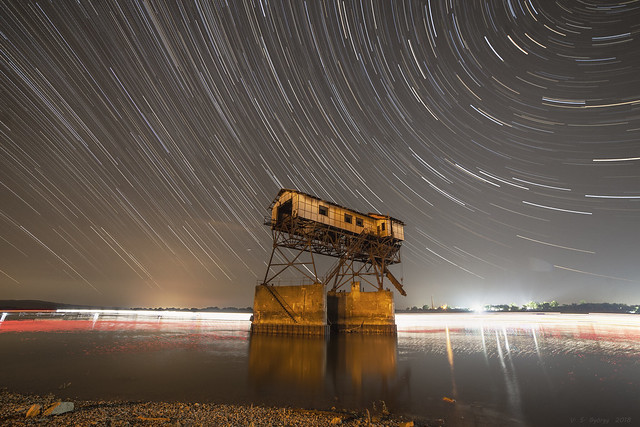
2018.09.10.
Esztergom, Hungary
Canon EOS 5D Mark II + Samyang EF 14/2.8
54x60sec, ISO 800, F2.8
Copyright: György Soponyai
This coal loader station is located at the shore of river Danube near Esztergom, Hungary. The station was built in 1927 as destination of a six-kilometer-long cableway connecting the nearby coal mines with transporter ships. The daily capacity of this transport system was 1000 tons of coal slack but it was closed down in 1963. The station is abandoned since 1970.
The Hungarian-Slovakian border runs at the middle of the river.

2018.09.10.
Esztergom, Hungary
Canon EOS 5D Mark II + Samyang EF 14/2.8
54x60sec, ISO 800, F2.8
Re: Submission: 2018 September
NGC 246 - The Skull Nebula
This happy little fellow is a planetary nebula discovered by William Herschel in 1785. The Skull Nebula is located in the constellation Cetus. From our vantage point, it has an angular resolution of just 3.7 arcmin. The estimated diameter is about 2.3 light years, and is 1,600 light years from our planet. It has a fairly low surface brightness at around 11th magnitude. Quite often, visual observers can find the foreground stars overpowering when trying to locate this planetary nebula. The central star is fairly bright at 11.8 magnitude. The eastern limb of the nebula is brighter suggesting that it is interacting with the interstellar medium. This is an excellent example of how some objects exhibit bow waves truly reflecting the dynamics of the interstellar medium.
I tried to capture the ethereal shell of this planetary nebula. It reminds me of a crystal sphere just hanging in space. The teal and red colours of the planetary really seem to add an element of extra depth to the image.
Thanks for looking.
Larger version here.
https://astrob.in/365896/0/

This happy little fellow is a planetary nebula discovered by William Herschel in 1785. The Skull Nebula is located in the constellation Cetus. From our vantage point, it has an angular resolution of just 3.7 arcmin. The estimated diameter is about 2.3 light years, and is 1,600 light years from our planet. It has a fairly low surface brightness at around 11th magnitude. Quite often, visual observers can find the foreground stars overpowering when trying to locate this planetary nebula. The central star is fairly bright at 11.8 magnitude. The eastern limb of the nebula is brighter suggesting that it is interacting with the interstellar medium. This is an excellent example of how some objects exhibit bow waves truly reflecting the dynamics of the interstellar medium.
I tried to capture the ethereal shell of this planetary nebula. It reminds me of a crystal sphere just hanging in space. The teal and red colours of the planetary really seem to add an element of extra depth to the image.
Thanks for looking.
Larger version here.
https://astrob.in/365896/0/

- Attachments
-
- NGC-246-Skull_Nebula-www.jpg (25.44 KiB) Viewed 10172 times
Collecting Photons.....
Images Gallery
https://www.astrobin.com/users/trobison/
https://www.flickr.com/photos/97807083@ ... 6565068452
Images Gallery
https://www.astrobin.com/users/trobison/
https://www.flickr.com/photos/97807083@ ... 6565068452
-
Paulee97
- Ensign
- Posts: 41
- Joined: Thu Sep 22, 2016 4:18 pm
- AKA: Paulee
- Location: Brno, Czech Republic
- Contact:
Re: Submission: 2018 September
21/P Giacobini-Zinner passing through Auriga constellation
Image&credit: Pavel Váňa
Description: Comet 21/P crossed the Auriga constellation and it was a beautiful show. It passed near clusters like M36, M37, M38 and near beautiful nebulae IC 405 and NGC 1893.
That night I captured this I was sitting on a chair with notebook and I was learning linear algebra for my exam. It was a beautiful night, sometimes I looked at the sky and saw Milky Way, some meteors and I was thinking about that I am going to be a physicist who can look into space and discover something new, something special about it.
Canon EOS 6D modded, Canon EF 70-200 f/4.0 (I used 200mm with f/4.5), 71x1 min, ISO 3200.
For higher resolution see: https://www.flickr.com/photos/153081618 ... ateposted/
Image&credit: Pavel Váňa
Description: Comet 21/P crossed the Auriga constellation and it was a beautiful show. It passed near clusters like M36, M37, M38 and near beautiful nebulae IC 405 and NGC 1893.
That night I captured this I was sitting on a chair with notebook and I was learning linear algebra for my exam. It was a beautiful night, sometimes I looked at the sky and saw Milky Way, some meteors and I was thinking about that I am going to be a physicist who can look into space and discover something new, something special about it.
Canon EOS 6D modded, Canon EF 70-200 f/4.0 (I used 200mm with f/4.5), 71x1 min, ISO 3200.
For higher resolution see: https://www.flickr.com/photos/153081618 ... ateposted/
Re: Submission: 2018 September
Great Andromeda Galaxy
Imaged at Negev Desert and processed by Leo Shatz
About 6 hours of integration time
Processed in PixInsight, postprocessing with Adobe Photoshop Details of core
About 6 hours of integration time
Processed in PixInsight, postprocessing with Adobe Photoshop Details of core
Re: Submission: 2018 September
I am french and I hope that you will excuse my poor English.
Last night I shot the 21P comet near the M37 open cluster :
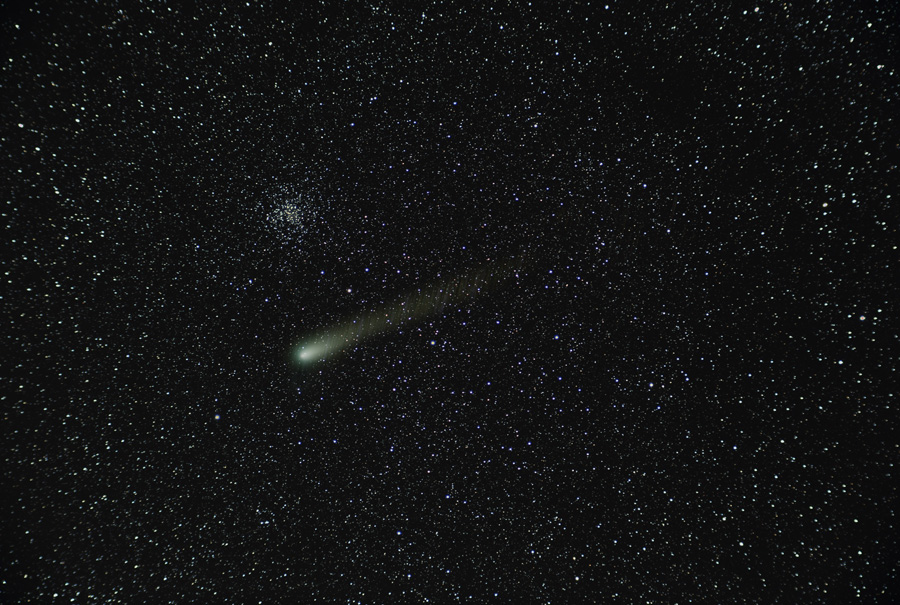
http://www.mfavret.fr/AstroPhoto/201809/21Pw3.jpg
But I also shot it during the 2 previous nights to show its movement along lhe three open clusters in Auriga (M38-36-37) :
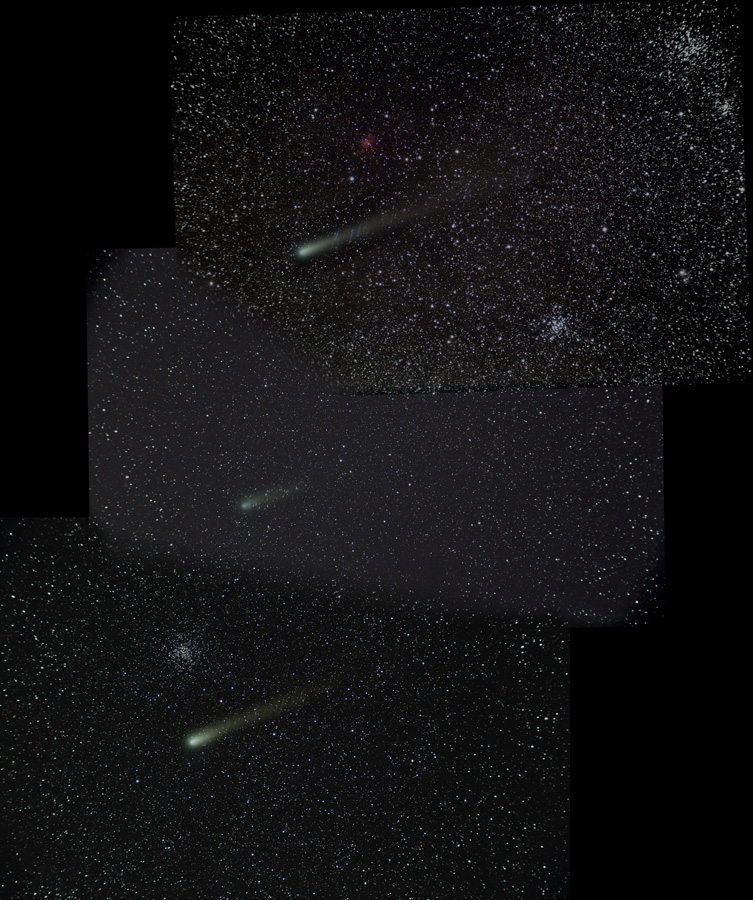
http://www.mfavret.fr/AstroPhoto/201809/21P3jwL.jpg
(the second night, from Sunday to Monday, was bad and I have very few pictures)
Last night I shot the 21P comet near the M37 open cluster :

http://www.mfavret.fr/AstroPhoto/201809/21Pw3.jpg
But I also shot it during the 2 previous nights to show its movement along lhe three open clusters in Auriga (M38-36-37) :

http://www.mfavret.fr/AstroPhoto/201809/21P3jwL.jpg
(the second night, from Sunday to Monday, was bad and I have very few pictures)
-
barretosmed
- Science Officer
- Posts: 482
- Joined: Thu Oct 12, 2017 6:04 pm
Re: Submission: 2018 September
Moon in color 14,5%
Moon in color 14,5%
The Moon is usually seen in subtle shades of gray or yellow
The different colors are recognized to correspond to real differences in the chemical composition of the lunar surface. The blue shades reveal areas rich in ilmenite, which contains iron, titanium and oxygen, mainly titanium, while the orange and purple colors show relatively poor titanium and iron
Best access details:
https://www.astrobin.com/full/365978/0/...
Equipments
Esprit 150mm triplet
Asi 1600mc
09/08/2018 4:40
Sao Paulo-SP- Brazil
Copyright: Fernando Oliveira de Menezes
Moon in color 14,5%
The Moon is usually seen in subtle shades of gray or yellow
The different colors are recognized to correspond to real differences in the chemical composition of the lunar surface. The blue shades reveal areas rich in ilmenite, which contains iron, titanium and oxygen, mainly titanium, while the orange and purple colors show relatively poor titanium and iron
Best access details:
https://www.astrobin.com/full/365978/0/...
Equipments
Esprit 150mm triplet
Asi 1600mc
09/08/2018 4:40
Sao Paulo-SP- Brazil
Copyright: Fernando Oliveira de Menezes
-
Efrem Frigeni
- Ensign
- Posts: 30
- Joined: Wed Jul 13, 2016 2:39 pm
Re: Submission: 2018 September
Cygnus Wall
https://www.flickr.com/photos/148843148 ... ed-public/
Copyright: Efrem Frigeni
this image is an RGB Composition
https://www.flickr.com/photos/148843148 ... ed-public/
Copyright: Efrem Frigeni
this image is an RGB Composition
Last edited by Efrem Frigeni on Thu Sep 13, 2018 3:00 pm, edited 1 time in total.
mail to : efrem.frigeni@gmail.com
-
Efrem Frigeni
- Ensign
- Posts: 30
- Joined: Wed Jul 13, 2016 2:39 pm
Re: Submission: 2018 September
Perseids in the Cygnus Wall
note : *** THE PERSEID WAS TAKED IN THE LUMINANCE CHANNEL (CLEAR) ON A MONOCHROME CCD SENSOR (08/15/2018 - 00:55) ***
this image is an L-RGB Composition.
location: Brumano (Italy)
[ Copyright: Efrem Frigeni
note : *** THE PERSEID WAS TAKED IN THE LUMINANCE CHANNEL (CLEAR) ON A MONOCHROME CCD SENSOR (08/15/2018 - 00:55) ***
this image is an L-RGB Composition.
location: Brumano (Italy)
[ Copyright: Efrem Frigeni
mail to : efrem.frigeni@gmail.com
-
G.Chatzifrantzis
- Ensign
- Posts: 29
- Joined: Wed Nov 01, 2017 12:46 pm
-
astroavani
- Ensign
- Posts: 18
- Joined: Thu Jun 28, 2018 3:53 am
My Best Saturn of August
This was probably the best Saturn of the year and also the last one before dedicating myself to the professional appointments and travels that prevented me from taking photos as I have in recent weeks.
There are many visible details and each wavelength evolves better than others, for example, with the IR 685 filter the polar hexagon and its central eye stand out perfectly. With the L filter, the tracks on the planet give a real show.
For anyone to complain about both the Cassini division and Encke's division are easily visible and the only thing else is because of the Crepe ring that was practically missing. I could have highlighted it better but opted for a higher contrast rendering to evidence other details that were quoted above.
There are many visible details and each wavelength evolves better than others, for example, with the IR 685 filter the polar hexagon and its central eye stand out perfectly. With the L filter, the tracks on the planet give a real show.
For anyone to complain about both the Cassini division and Encke's division are easily visible and the only thing else is because of the Crepe ring that was practically missing. I could have highlighted it better but opted for a higher contrast rendering to evidence other details that were quoted above.
Re: Submission: 2018 September
NGC7331 and Deer Lick Group
Nick Pavelchak
Altamont, NY
Larger images and info:
https://www.astrobin.com/310862/0/?nc=user
Nick Pavelchak
Altamont, NY
Larger images and info:
https://www.astrobin.com/310862/0/?nc=user
-
-Amenophis-
Re: Submission: 2018 September
Cave nebula (Sh2-155 and VdB155)

Full size : Cave Nebula SH2-155 and VdB155
Credit :
Thomas LELU
Newton ASA10’'
Paramount MyT
Moravian G2-4000
LHa-RHaGB
Total exposure : 22hrs
FRANCE - Lorraine

Full size : Cave Nebula SH2-155 and VdB155
Credit :
Thomas LELU
Newton ASA10’'
Paramount MyT
Moravian G2-4000
LHa-RHaGB
Total exposure : 22hrs
FRANCE - Lorraine
-
KuriousGeorge
- Science Officer
- Posts: 218
- Joined: Wed Dec 30, 2015 7:07 am
- Location: San Diego, CA
- Contact:
Re: Submission: 2018 September
NGC 891. KG Observatory, Julian, CA.
These September evenings were particularly dark at 21.5 SQM with an unusual Marine layer over San Diego this time of the year. 15-minute luminance subs hovered around 2.1" FWHM measured using CCDWare. In general, a very dark and steady period. Color shot with a 10 mph wind, but the direct drive L600 kept to within +/- 1".
Imaging telescope or lens:Planewave CDK24
Imaging camera:FLI Proline 16803
Mount:Planewave L600
Guiding camera:Starlight Xpress Ultrastar
Focal reducer:None
Software:Planewave PWI4, Planewave PWI3, PixInsight 1.8, Maxim DL6, PHD Guiding 2, Neat Image V7, Photoshop CS3, Sequence Generator Pro
Filters:Astrodon 50mm R, Astrodon 50mm B, Astrodon 50 mm G, Astrodon 50mm L
Accessories:FLI CFW-5-7, Astrodon Monster MOAG, Hedrick Focuser, Planewave Delta-T, Planewave EFA
Resolution: 3602x2222
Dates: Sept. 9, 2018, Sept. 10, 2018, Sept. 12, 2018, Sept. 14, 2018
Frames:
Astrodon 50 mm G: 8x900" -20C bin 1x1
Astrodon 50mm B: 8x900" -20C bin 1x1
Astrodon 50mm L: 10x900" -20C bin 1x1
Astrodon 50mm R: 8x900" -20C bin 1x1
Integration: 8.5 hours
Darks: ~20
Flats: ~80
Flat darks: ~80
Bias: ~20
Avg. Moon age: 9.55 days
Avg. Moon phase: 9.29%
Mean SQM: 21.50
Mean FWHM: 2.10
Temperature: 18.00
Astrometry.net job: 2252949
RA center: 35.635 degrees
DEC center: 42.346 degrees
Pixel scale: 0.469 arcsec/pixel
Orientation: 269.374 degrees
Field radius: 0.275 degrees
Locations: KG Observatory, Julian, CA, United States
These September evenings were particularly dark at 21.5 SQM with an unusual Marine layer over San Diego this time of the year. 15-minute luminance subs hovered around 2.1" FWHM measured using CCDWare. In general, a very dark and steady period. Color shot with a 10 mph wind, but the direct drive L600 kept to within +/- 1".
Imaging telescope or lens:Planewave CDK24
Imaging camera:FLI Proline 16803
Mount:Planewave L600
Guiding camera:Starlight Xpress Ultrastar
Focal reducer:None
Software:Planewave PWI4, Planewave PWI3, PixInsight 1.8, Maxim DL6, PHD Guiding 2, Neat Image V7, Photoshop CS3, Sequence Generator Pro
Filters:Astrodon 50mm R, Astrodon 50mm B, Astrodon 50 mm G, Astrodon 50mm L
Accessories:FLI CFW-5-7, Astrodon Monster MOAG, Hedrick Focuser, Planewave Delta-T, Planewave EFA
Resolution: 3602x2222
Dates: Sept. 9, 2018, Sept. 10, 2018, Sept. 12, 2018, Sept. 14, 2018
Frames:
Astrodon 50 mm G: 8x900" -20C bin 1x1
Astrodon 50mm B: 8x900" -20C bin 1x1
Astrodon 50mm L: 10x900" -20C bin 1x1
Astrodon 50mm R: 8x900" -20C bin 1x1
Integration: 8.5 hours
Darks: ~20
Flats: ~80
Flat darks: ~80
Bias: ~20
Avg. Moon age: 9.55 days
Avg. Moon phase: 9.29%
Mean SQM: 21.50
Mean FWHM: 2.10
Temperature: 18.00
Astrometry.net job: 2252949
RA center: 35.635 degrees
DEC center: 42.346 degrees
Pixel scale: 0.469 arcsec/pixel
Orientation: 269.374 degrees
Field radius: 0.275 degrees
Locations: KG Observatory, Julian, CA, United States
Re: Submission: 2018 September
Comet 21P / Giacobini-Zinner on 15.09.2018
near open clusters M 35 and NGC 2158
Copyright: Velimir Popov, Emil Ivanov Irida Observatory
http://www.irida-observatory.org/CCD/21 ... 00px_p.jpg
More info and hi-res images on website
near open clusters M 35 and NGC 2158
Copyright: Velimir Popov, Emil Ivanov Irida Observatory
http://www.irida-observatory.org/CCD/21 ... 00px_p.jpg
More info and hi-res images on website
Last edited by bystander on Sat Sep 15, 2018 2:07 pm, edited 1 time in total.
Reason: Please, no hotlinks to images > 500Kb.
Reason: Please, no hotlinks to images > 500Kb.
-
peter shah
- Asternaut
- Posts: 6
- Joined: Tue Jan 11, 2011 9:14 am
Re: Submission: 2018 September
IC1396 The Elephant Trunk Nebula in Cepheus. Imaged in RGB and Ha from my garden in Mid Wales U.K.
Equipment: 12 inch corrected Newtonian and H35 full frame sensor.
Exposure: 5x600in Red 5x420 in Green 5x560 in Blue and 2x1800 in Ha

Medium Res: https://www.astrobin.com/full/366436/0/
Full res: https://www.astrobin.com/full/366436/0/?real=&mod=
Peter Shah
Equipment: 12 inch corrected Newtonian and H35 full frame sensor.
Exposure: 5x600in Red 5x420 in Green 5x560 in Blue and 2x1800 in Ha

Medium Res: https://www.astrobin.com/full/366436/0/
Full res: https://www.astrobin.com/full/366436/0/?real=&mod=
Peter Shah
-
strongmanmike
NGC 55 - A cigar in space
At only about 7 Million lights years, NGC 55 is one of the closest galaxies to the Milky Way and allows us to peer deep inside her edge on structure a little easier than most galaxies.
Larger image here: https://www.flickr.com/photos/strongman ... ed-public/
Copyright: Michael Sidonio
Larger image here: https://www.flickr.com/photos/strongman ... ed-public/
Copyright: Michael Sidonio

